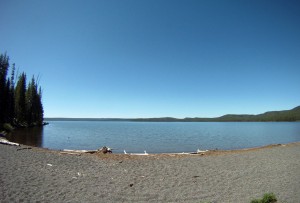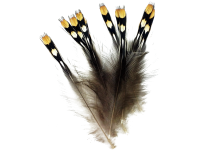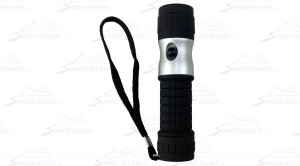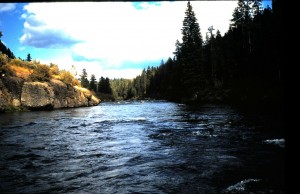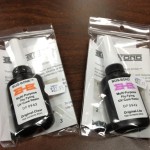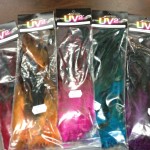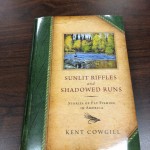Shoshone Lake
Shoshone Lake
It’s the largest roadless lake in the lower forty-eight states. That is thanks to being in Yellowstone National Park. At a bit over twelve square miles it is a distant second in size of Park lakes to Yellowstone Lake. Historically barren of salmonids until the late nineteenth century, it was stocked with lake trout from the Great Lakes and with brown and brook trout. So well did these adapt that for a while a commercial fishery operated on the lake to supply Park hotels with table fare. This activity was stopped when fish stocks in the lake diminished early in the twentieth century. Later, power boats were eliminated from the lake in an effort to maintain its pristine character. That restriction, thankfully, remains to this day.
Because Shoshone is roadless, trails and a river trip up its outlet Lewis River are the only means of approach. The water trip requires crossing Lewis Lake and traveling up the river in a non-motorized manner. Several trails go to the lake, the longest being from Bechler Ranger Station or even Old Faithful, trips of over twenty-five miles to Shoshone’s west end. To the east end and outlet, a trail begins just north of Lewis Lake, follows along a ridge above the river and ends near the Shoshone Lake Ranger Station, a distance of about five miles. The shortest trail to the lake begins off the Old Faithful-West Thumb Junction road and follows Delacey Creek to the lake, a distance of three miles. This is the easily traversed Delacey Creek Trail which leads close to one of the best fishing spots ( see the above picture) on the lake. Only problem is the angler needs to pack a float tube or similar floatation device to get out in the lake to realize the superb fishing at this location. Shoreline fishing is also possible at this location, but a good day doing so might result in on one or two fish. Out in the lake here, especially about one hundred yards, along the eastern shoreline, are weed beds which host food forms such as leeches, scuds, aquatic insect life cycle forms, and forage minnows. These weed beds therefore attract numerous foraging juvenile lake trout, brown trout and relatively rare brook trout. All the visiting fly-fisher must do is paddle out to these and use a full-sinking line and moderately strong (2X) nine foot leader to get down to these beds, usually around fifteen feet below, with patterns that imitate these food forms, and action will come. Action comes from juvenile lake trout, usually measuring between seventeen and twenty-two inches, and some of the most beautiful brown trout alive. These range up to twenty-five inches and fight as well as their lower elevation brothers and sisters. When usual wind is not roughening the lake surface, fish can be seen around the weed beds in the ultra-clear water.
There is also another “must” for fishing the lake in this manner: insulated waders or enough layers of clothing underneath waders to keep body parts in the forty-five degree water warm enough to function. A good shielding hat for sunlight protection and a raincoat in case of afternoon thundershowers should be packed. While on the lake mosquitoes are not pesty, but they can be on the trail. So a repellent high in DEET content is recommended. If one packs food, this must be hung in trees to keep away from bears. Better yet, take food items out onto the lake. Bringing potable water is not required, but is recommended. A current Park fishing license is required, and so is a non-motorized ($10 in 2012) boat permit for using a float tube or similar device. Both permits can be obtained at Park ranger stations and at the West Yellowstone Visitor’s Center. Fishing Shoshone Lake in this manner makes for a full day, and plenty of excellent restaurants in the Park at such as Old Faithful and Grant Village, outside the Park in West Yellowstone, along the highway to Jackson, or in Jackson itself will beckon. There is also the option of reserving one of a few primitive campsite near this part of the lake for an overnight stay. Either way; day trip or overnight, Shoshone Lake offers a true wilderness experience with the only motorized sound coming from an occasional overhead airplane.

